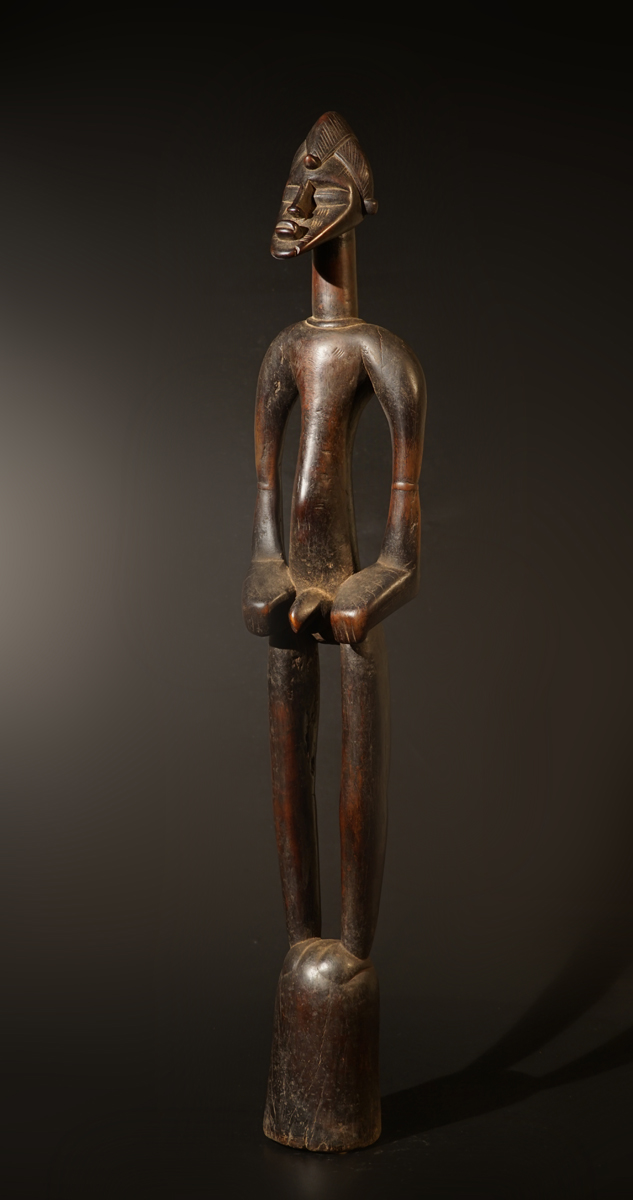|
A male Senufo, Rhythm Pounder, called Déblé, Northern Ivory Coast, region of Boudiali, collected in the village Nafou, standing on a cylindrical, slightly conical base, on flattened high abstract feet and columnar legs, thorso with a pointed navel, rounded shoulders and open work arms, the large, stylized hands reting close to the hips, a thick neck supporting an oval head with protruding chin and a flattened fascial plane, the coifure threeparted with a domed middle crest; a fine touch patina is demonstrating a longlsting ritual use., brown to reddish patina, partly shiny. According of Gottschalk, who tryed to make a typolgy of the Senufo Déblé these exemplares would be probably submitted to the group of the kulibèlè and not the fonombèlè. "Während die ersteren (fonombèlè) entweder wegen mangelnder Fähigkeit zu feinerer Arbeit (the fonombèlè are the blacksmiths in the Senufo society) oder als bewußt eingesetztes Stilmittel die klaren und wuchtigen Formen, die kontrastierenden Waagerechten und Senkrechten weitgehend so beließen, wie sie bei der Festlegung der Proportionen entstanden waren, bemühen sich die kulibèlè (the traditional carver) um ein weiches Ineinanderfließen der Körperteile, soweit sie nicht den Stil ihrer älteren Brüder in ihre Arbeit aufnahmen oder ihn mehr oder weniger kopierten."Gottschalk Burkhard, "Senufo, Massa und die Statuen des poro" 2002: 43. More realistic sounds the opinion of Glaze, who described the difficulties of a stylistic typology according of both ethnic groups after she did fieldwork around kufulo (region of Dikodougou) Glaze Anita J., "Art and Death in a Senufo Village", Indiana University Press, Bloomington 1981: 7 sold Height: 114 cm |
 photo: wolfgang-jaenicke.com, for more information, please write us an e-mail with the identification number of the photo identification no. FSA03455.jpg |